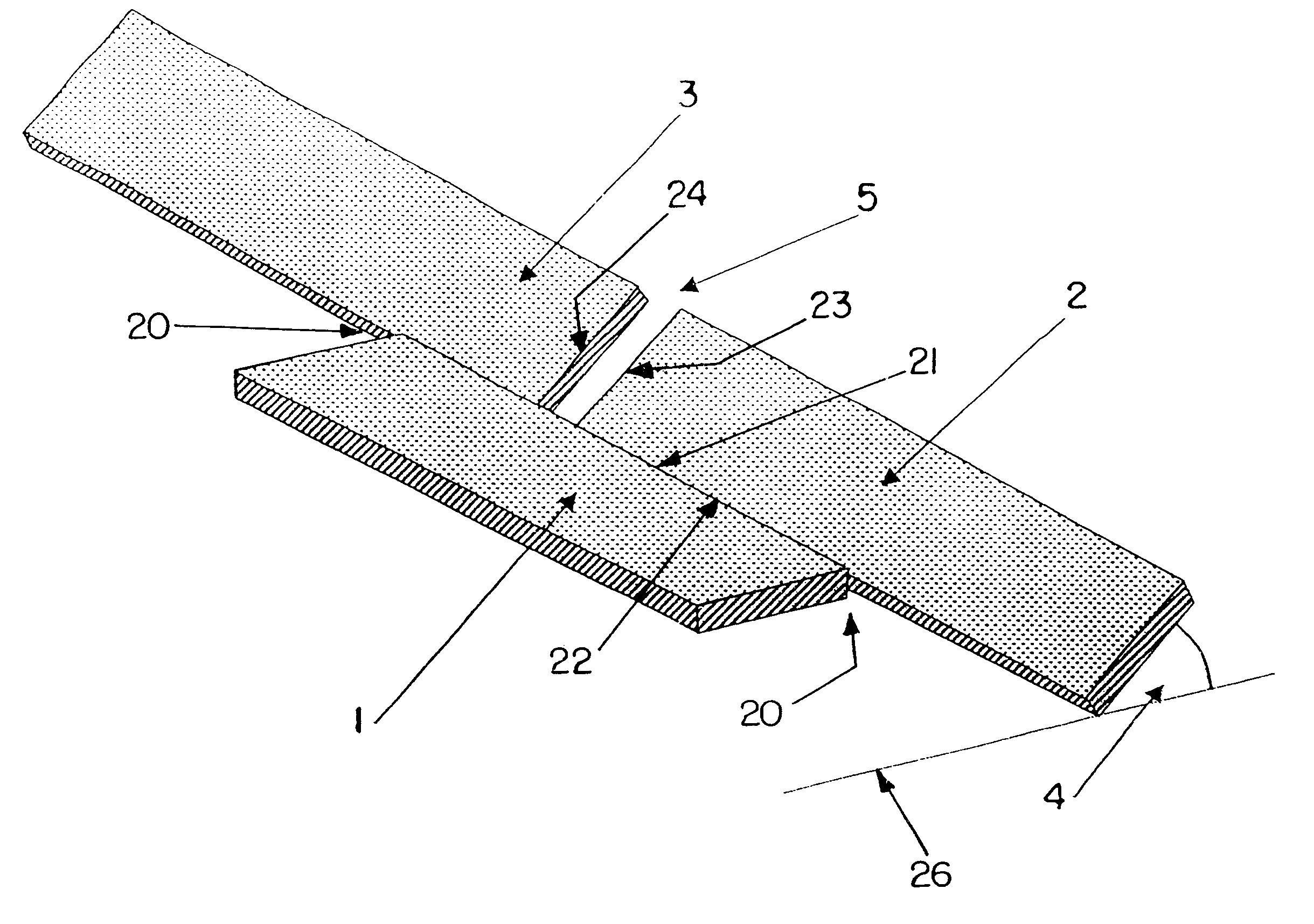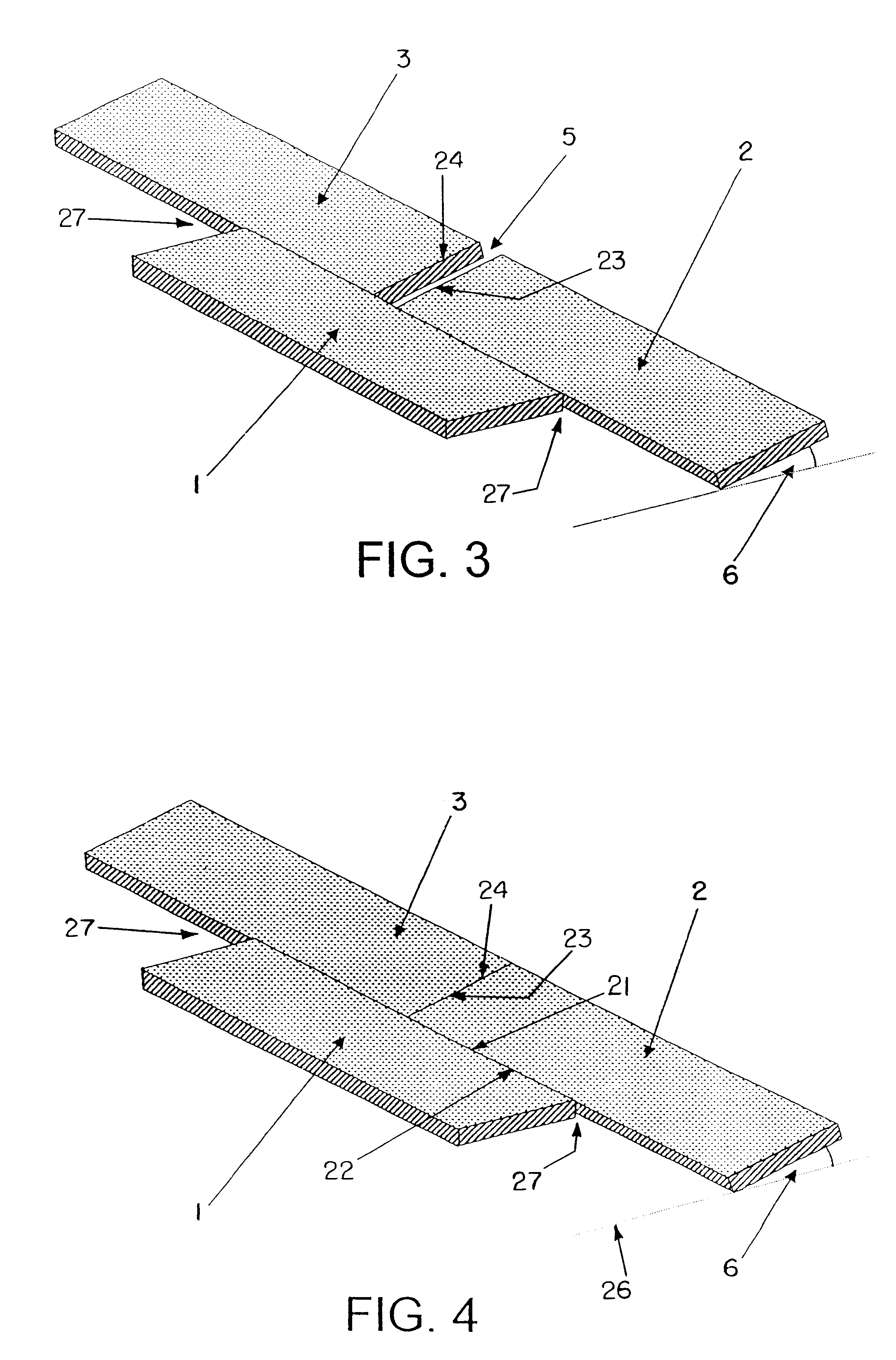Method of laying panels
a technology of laying panels and joints, applied in the direction of building components, roof coverings, walls, etc., can solve the problems of gap between the two joining panels, need of longitudinal displacement of the groove panel, and floor prone to mechanical destruction and water penetration
- Summary
- Abstract
- Description
- Claims
- Application Information
AI Technical Summary
Benefits of technology
Problems solved by technology
Method used
Image
Examples
Embodiment Construction
FIG. 6, to which reference is now made, illustrates a part of a cross-section of a panel 2. At its edge 9 a tongue 12 projects parallel to that edge 9. With its bottom side 8 the panel 2 and all further illustrated panels are later in contact with the floor, the opposite side is its or their top surface 7 respectively. A locking groove 10 is a first locking member and is part of the tongue 12 and is open at the rear or bottom side of the panel 8. As this panel's counterpart a further part of a cross-section of a panel 3 is shown. At this edge 9 it is provided with a second groove 13 with the flanks 14 and 15. Both flanks are of the same length 16. A projection 11 which is the second locking member is part of said second groove 13 and projects toward said top or surface 7. In a preferred embodiment of the invention the flank 14, on which said projection 11 is disposed, is flexible.
FIG. 7, to which reference is now made, illustrates a part of a cross-section of a panel 2. At its edge ...
PUM
 Login to View More
Login to View More Abstract
Description
Claims
Application Information
 Login to View More
Login to View More - R&D
- Intellectual Property
- Life Sciences
- Materials
- Tech Scout
- Unparalleled Data Quality
- Higher Quality Content
- 60% Fewer Hallucinations
Browse by: Latest US Patents, China's latest patents, Technical Efficacy Thesaurus, Application Domain, Technology Topic, Popular Technical Reports.
© 2025 PatSnap. All rights reserved.Legal|Privacy policy|Modern Slavery Act Transparency Statement|Sitemap|About US| Contact US: help@patsnap.com



